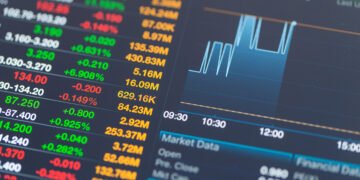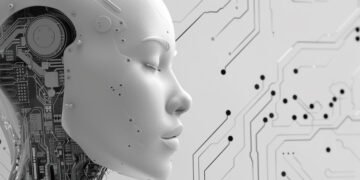The precious metals market has always been characterized by one fundamental constant: volatility. For decades, traders and investors have recognized that dramatic price swings in gold, silver, copper, and other metals aren’t market flaws to be corrected—they’re inherent features that create both opportunity and risk in equal measure. These markets respond with lightning speed to macroeconomic developments, geopolitical tensions, central bank policy shifts, and the often-irrational emotional responses of market participants.
Throughout 2024, precious metals markets have demonstrated this volatility in spectacular fashion, with prices experiencing dramatic spikes and crashes within remarkably short timeframes. These movements have been triggered by diverse catalysts ranging from unexpected central bank policy pivots to sudden supply chain disruptions, from inflation data releases to geopolitical crises emerging without warning. For market participants, the challenge has evolved beyond simply interpreting these movements—success now depends on anticipating them before they occur.
The Emergence of AI as a Trading Tool
Into this complex and fast-moving environment, artificial intelligence has emerged not as a speculative novelty or marketing gimmick, but as a sophisticated tool capable of processing the vast amounts of information that drive precious metals markets. Unlike human traders who must sleep, take breaks, or can be overwhelmed by information overload, AI systems operate continuously, ingesting thousands of data points in real-time and generating insights at speeds that surpass even the most experienced human analysts.
The appeal of AI in precious metals trading stems from its ability to remain emotionally neutral while processing complex information streams. AI systems don’t experience panic when markets decline sharply, nor do they become overconfident during bull runs. They don’t miss overnight developments from Asian markets or sleep through breaking news from geopolitically sensitive regions. Instead, they maintain constant vigilance, analyzing patterns and relationships that might escape human attention.
This technological capability addresses a fundamental limitation that has long plagued precious metals trading: the human inability to continuously monitor and process all relevant information streams simultaneously. Markets that once seemed to move on mysterious or unpredictable forces can now be understood through the lens of comprehensive data analysis that captures subtle signals and relationships.
The Limitations of Traditional Analysis
Traditional trading methodologies, while valuable, face increasing challenges in today’s information-rich environment. Even the most skilled human analysts cannot realistically monitor every relevant news feed, production report, economic indicator, and market signal around the clock. The analytical tools that have served traders for decades—technical indicators, chart patterns, and macroeconomic reports—remain useful but are inherently backward-looking in nature.
Consider gold’s price behavior as an illustrative example. Gold values respond not only to traditional economic indicators like inflation data and currency movements but also to subtler factors such as the tone and language used in central bank communications, unexpected shifts in government bond yields, or sudden military developments in regions far from major financial centers. These diverse signals often arrive in unstructured formats and require immediate interpretation to be actionable.
A human analyst might require hours to gather, process, and synthesize all relevant information affecting gold prices at any given moment. By the time this analysis is complete, market conditions may have already shifted, rendering the insights less valuable or entirely obsolete. AI systems, by contrast, can extract, analyze, and synthesize this same information within milliseconds, providing a crucial speed advantage in markets where timing often determines profitability.
This speed differential becomes particularly important in precious metals markets, where volatility can create and destroy trading opportunities within very short timeframes. A delay of even a few minutes in recognizing and responding to market-moving information can mean the difference between capturing a profitable move and missing it entirely.
Understanding AI’s Capabilities and Limitations
The term “artificial intelligence” encompasses a broad range of technologies, but in the context of precious metals trading, several specific capabilities stand out as particularly valuable:
Natural Language Processing (NLP) enables AI systems to analyze news headlines, financial statements, regulatory filings, and social media content to extract market-relevant information in real-time. This capability allows traders to stay informed about developments that might affect precious metals prices, even when those developments occur in seemingly unrelated sectors or geographic regions.
Predictive Modeling uses machine learning algorithms to identify patterns in historical price data and market behavior, then applies these patterns to forecast potential future price movements. While these predictions are probabilistic rather than certain, they can provide valuable insights into likely market directions and potential support or resistance levels.
Sentiment Analysis involves analyzing content from platforms like Twitter, Reddit, financial news sites, and trader forums to gauge overall market sentiment and risk appetite. Since precious metals often serve as safe-haven assets, understanding shifts in investor sentiment can provide early warning signals for significant price movements.
Anomaly Detection systems are designed to identify unusual market behavior that deviates from normal patterns. This capability can provide early warning of potential market manipulation, unexpected supply disruptions, or the emergence of new fundamental factors affecting precious metals prices.
However, it’s crucial to understand that AI systems are not infallible predictors of future market movements. They analyze historical data and current information to generate probabilistic assessments, not guarantees. AI can be particularly vulnerable during “black swan” events—rare, unpredictable occurrences that fall outside historical patterns. Additionally, AI systems can perpetuate biases present in their training data or fail to adapt quickly to fundamental changes in market structure or behavior.
Despite these limitations, AI’s primary advantage lies in its ability to process vast volumes of information without emotional bias, identify complex patterns that might escape human attention, and provide probabilistic assessments based on comprehensive data analysis rather than intuition or limited information sets.
Pattern Recognition in Complex Markets
Human beings are naturally inclined to seek patterns in data, but we are inherently limited in our ability to identify complex, multi-dimensional relationships. This limitation becomes particularly problematic in precious metals markets, where prices are influenced by numerous interconnected factors operating across different timeframes and geographic regions.
AI excels in environments where meaningful signals are embedded within large amounts of noise. Machine learning algorithms can identify subtle correlations and micro-patterns that would be invisible to traditional analytical methods. These insights often prove valuable in anticipating market movements, particularly in complex situations where no single indicator provides a complete picture of market conditions.
For example, AI might identify relationships between seemingly unrelated factors such as copper mining production reports, Chinese manufacturing data, and U.S. dollar strength that collectively indicate likely direction for silver prices. Human analysts might recognize some of these relationships individually, but AI can process all of them simultaneously and weight their relative importance based on historical precedent.
Enhanced Risk Management Through AI
Precious metals markets are notorious for their volatility, which can be both an opportunity and a significant risk. Traditional risk management approaches often rely on historical volatility measures and simple position sizing rules, but these methods may be inadequate in rapidly changing market conditions.
AI enhances risk management by modeling volatility as a dynamic, multi-factor phenomenon rather than a static historical average. AI systems can assess current market conditions, correlations between different assets, and shifts in investor sentiment to adjust risk exposure in real-time. This dynamic approach helps investors avoid overexposure during periods of market fragility while positioning them to capitalize on opportunities when risk appetite returns.
Portfolio-level optimization has also become more sophisticated through AI applications. Rather than relying solely on historical returns and correlations, AI can recommend asset weightings based on forward-looking volatility estimates and expected market conditions. This approach enables more strategic diversification, improved hedging strategies, and fewer unpleasant surprises when market conditions change unexpectedly.
Modern AI-powered risk management systems also incorporate robust security measures to protect sensitive trading data and strategies. Cloud security principles and data privacy protections ensure that proprietary trading information remains secure from unauthorized access while still enabling the real-time analysis capabilities that make AI valuable.
The Psychological Advantage of Emotionless Trading
Emotional decision-making has long been recognized as one of the greatest obstacles to successful trading in any market, but it’s particularly problematic in precious metals, where dramatic price movements can trigger strong emotional responses. Fear-driven selling, greed-motivated buying, and revenge trading following losses have destroyed countless trading accounts over the years.
AI offers a powerful antidote to emotional trading by operating according to logical rules and probabilistic assessments rather than feelings. AI systems don’t experience fear when markets decline sharply, nor do they become overconfident during strong uptrends. They execute trades based on predefined criteria and systematic analysis rather than emotional impulses.
This emotional neutrality becomes particularly valuable during chaotic market periods when human traders are most likely to make poor decisions. Whether responding to unexpected interest rate changes, geopolitical crises, or sudden supply disruptions, AI systems continue operating according to their programmed logic rather than emotional reactions.
Traders who successfully integrate AI into their workflow often find it easier to maintain discipline and consistency in their trading approach. The AI system serves as an objective counterpoint to emotional impulses, helping traders stick to their strategic plans even when market conditions become stressful or uncertain.
Practical Implementation and Integration
The most successful applications of AI in precious metals trading involve thoughtful integration with human judgment rather than complete replacement of human decision-making. AI serves as a powerful analytical tool that enhances human capabilities rather than replacing them entirely.
Effective implementation requires feeding AI systems high-quality, relevant data and rigorously testing their performance across different market conditions. Traders must also cross-check AI outputs against their own experience and market knowledge to ensure that the system’s recommendations make sense in the current context.
The democratization of AI tools has made sophisticated analytical capabilities accessible to individual traders and smaller institutions that previously couldn’t afford teams of analysts. Whether identifying correlations between gold prices and currency movements or detecting shifts in industrial demand for palladium, AI provides a scalable analytical framework that can handle increasingly complex market dynamics.
However, successful AI implementation requires ongoing attention and refinement. Market conditions change over time, and AI systems must be regularly updated and retrained to maintain their effectiveness. This process requires both technical expertise and deep understanding of market dynamics.
Looking Forward: AI as a Competitive Advantage
The precious metals markets will likely never become predictable or easy to navigate. They will continue to be influenced by an ever-expanding array of factors, from traditional economic indicators to emerging technologies, from geopolitical developments to climate change impacts. In this environment, the challenge isn’t to eliminate uncertainty—it’s to develop better tools for understanding and navigating it.
Artificial intelligence doesn’t transform precious metals trading into a simple or risk-free activity. Instead, it makes trading more informed, systematic, and responsive to changing conditions. For traders and investors willing to embrace these new tools while maintaining appropriate skepticism and oversight, AI offers a path toward more consistent and profitable participation in these dynamic markets.
The choice facing today’s precious metals traders isn’t whether to use AI—it’s how to integrate it effectively into their analytical and decision-making processes. Those who continue relying exclusively on intuition or limited analytical tools may find themselves at an increasing disadvantage compared to those who harness the pattern recognition and analytical capabilities that AI provides.
In the end, volatility in precious metals markets remains both a challenge and an opportunity. AI simply provides better tools for distinguishing between the two and positioning accordingly. For serious participants in these markets, the question isn’t whether to adopt AI-enhanced trading approaches—it’s how quickly they can do so effectively.
Acknowledgment: This article was written with the help of AI, which also assisted in research, drafting, editing, and formatting this current version.







